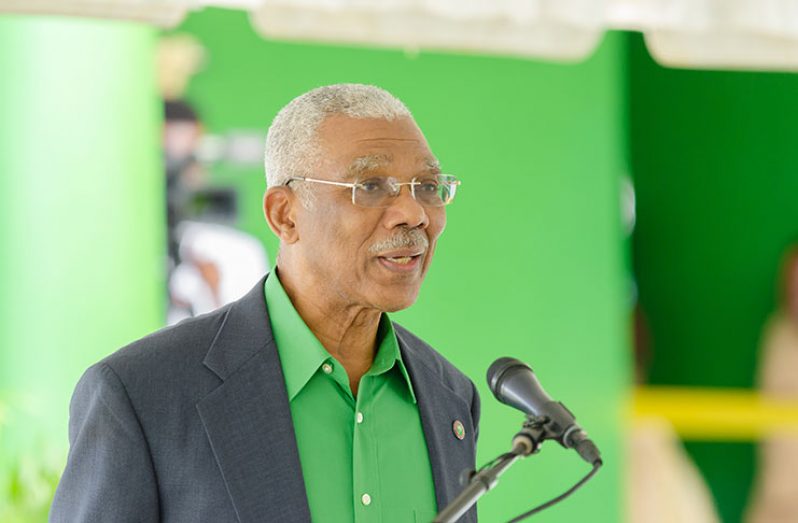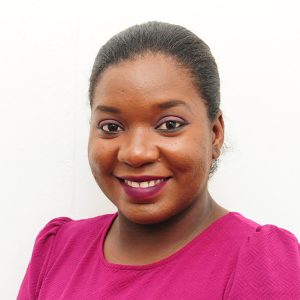…President says gov’t injected over $170B so far
…90% of children now master reading, math skills compared to 37% in 2016
PRESIDENT David Granger said his government has commenced the process of repositioning the Education Sector in the country, and already over $170B has been spent on education over the past four years.
“It is being accorded the highest priority,” President Granger told a gathering during the commissioning ceremony for the $186.3M Tertiary Students Dormitory at Liliendaal on Monday. Under the President Granger Administration, spending in the education sector has moved from 14.8 per cent of the national budget in 2014 to 17.0 per cent in 2017. The numbers are being reflected in the transformation that continues to take place across the country, the President said.
“Four years ago, our education system was afflicted with many challenges – falling exam results, high drop-out rates, overcrowding and decrepit infrastructure. Our children were leaving education without the necessary skills to find a job,” the Head of State pointed out. Statistics show that in 2016, only 36 per cent of the country’s children master reading and maths skills. Today, the number of children that master those very skills has increased to 90 per cent.

Photos by Delano Williams
The President assured those present that the government’s plan for education, over the next five years, will secure a better future for all Guyana but in the interim, there are short term initiatives that are being rolled out. “Government is not content to await the successful outcome of its long-term educational policies. It is also making short-term interventions. The establishment of this tertiary education dormitory attests to government’s commitment to improving educational opportunities for hinterland students. It reflects our intention to ensure a more equal society by reducing the disparities between the hinterland and coastland through education,” he explained. Guyana’s education policy places major emphasis on access, attendance, attainment, and accommodation with the overall aim of ensuring every child has access to quality education.
Minister of Education Nicolette Henry, in her address, said from 2015 to now, Guyana is in a different place with respect to the education sector. “I am on record to say and I will repeat, again in 2014 we saw an education sector in crisis… the majority of our students in the hinterland were struggling to get through and satisfy the exit requirements for nursery, primary and secondary schools. Today, I am pleased to say that we have begun the process of turning things around,” Minister Henry explained.
According to statistical data emanating from the Education Ministry, in 2013, the ministry found that very few children were equipped to begin learning, particularly those in remote areas. “In fact, around 60% of the children failed to meet the basic prerequisites for reading, fewer than 10% could demonstrate any understanding of text and 40% showed very little or no ability to identify any numbers from 1 to 10,” Minister Henry detailed.
Today, with less than five years in office, the government, she posited, has been able to turn those figures around. According to an article published on December 3, 2018, in the apolitical journal, a global platform, Guyana is turning of the tide in Early Childhood Education. Current data indicate that almost 90 per cent of children now master reading and maths skills compared to 37 per cent in 2016. The Education Minister said the government is committed to educating all of the country’s children, regardless of their location.
Meanwhile, President Granger, in marking the country’s development under his stewardship, said Information Communications Technology (ICT) is boosting access to modern education. ICT hubs have been established in 171 communities, including the hinterland communities of Aishalton, Annai, Baramita, Bartica, Iwokrama, Kato, Karasabai, Masakenari, Port Kaituma, Mabaruma, Matthew’s Ridge, Mahdia, Paramakatoi, Sand Creek, Santa Rosa, St. Ignatius and Waramadong. Approximately 175 primary schools; 106 secondary schools and 34 technical and vocational institutions have been connected to support remote-access learning and online research to help students with their academic assignments and homework. Smart classrooms have already been installed at Bartica, Mabaruma, Lethem, Three Miles and Santa Rosa.
SCHOLARSHIPS
Additionally, the government is increasingly putting systems in place to ensure that students have access to education. One such system is the provision of government-supported scholarships, which provide opportunities for hinterland students to attend secondary and tertiary education. Since taking office, the government has increased the number of scholarships awarded each year. The Ministry of Indigenous Peoples’ Affairs has increased the number of hinterland scholarships from 120 in 2014 to 186 in 2018. Added to that, Hinterland students, also, have been among the beneficiaries of the 1,599 tertiary-level scholarships offered by the Department of the Public Service since 2015.
“Attendance at school is equally important. Government’s policy is to ensure that every child attends school and stays in school. We have made progress in ensuring that our children attend and stay in school with the launch – exactly four years ago on 15th July 2015 – of the Public Education Transportation Service (PETS) which started as the 3Bs project. Twenty-nine buses, ten boats and more than 1,400 bicycles have been distributed so far under PETS to make it easier for children to attend school,” President Granger said.
He stated that the measures implemented to improve school attendance have resulted in a decline in hinterland school drop-outs, explaining that an average of 10 primary school students per week dropped out from hinterland schools in 2014; however, it declined to an average of 3 persons in 2017. An average of 17 secondary school students dropped out weekly from hinterland schools in 2014, he added, while noting that this, too, has declined to an average of 5 per week in 2017. Emphasis has also been placed on the training of teachers, on the basis that it is vital to improving students’ performance. Almost 1900 teachers were trained and added to the teaching profession since 2015.




.png)









